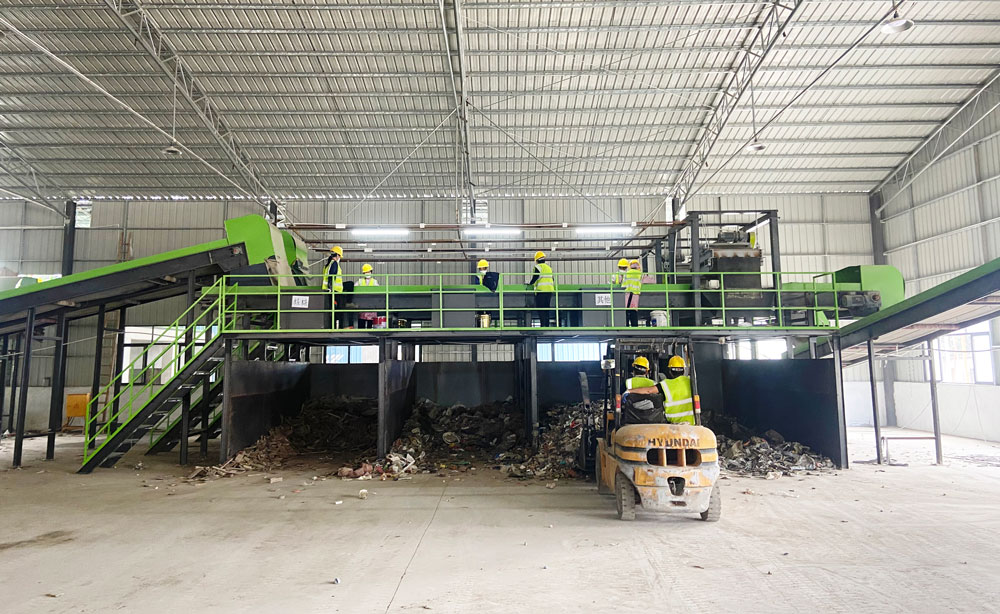 Time:2025-01-06
Time:2025-01-06
 Source:青绿环境
Source:青绿环境
Waste sorting and disposal equipment is an essential component of modern urban solid waste management. It plays a crucial role in reducing environmental pollution, recycling resources, and improving waste processing efficiency. With the increasing global awareness of environmental protection and technological advancements, waste sorting and disposal equipment is becoming more efficient and intelligent, and is widely used in many countries and regions.

As urbanization accelerates and populations grow, the amount of waste generated is also increasing. If this waste is not properly managed, it can cause severe environmental pollution, including soil, water, and air pollution. Therefore, waste sorting and disposal equipment is vital for separating recyclables, hazardous waste, and other types of waste, helping to achieve the goals of waste reduction, resource recovery, and harmlessness.
Types of Waste Sorting and Disposal Equipment
1. Automatic Sorting Systems: These systems use sensor technologies (such as optical, X-ray, or near-infrared) to identify different types of materials and sort them using air currents, magnets, or other mechanical devices. Automatic sorting can greatly increase sorting speed and accuracy, reducing the need for manual labor.
2. Shredders and Compactors: Used to break down large pieces of waste into smaller parts for subsequent processing; at the same time, compactors can compress waste to save space, facilitating transportation and storage.
3. Biological Processing Equipment: Designed for organic waste, such as composting facilities and anaerobic digesters. These devices can convert organic matter into useful products like fertilizer or biogas through natural processes.
4. Incinerators: For waste that is difficult to recycle or unsuitable for landfilling, incineration can be used for processing. Modern incinerators are equipped with advanced exhaust gas purification devices to ensure emissions meet strict environmental standards.
5. Smart Bins and Collection Vehicles: Bins and garbage trucks equipped with smart components such as RFID tags and weight sensors can help monitor waste generation and optimize collection routes, thereby improving the overall efficiency of waste management systems.
Technological Development Trends
- Internet of Things (IoT) and Big Data Analysis: By connecting various waste sorting and disposal equipment to the internet, managers can obtain real-time data, enabling them to make more scientific and rational decisions.
- Application of Artificial Intelligence (AI): AI can help improve the performance of automatic sorting systems, for example, by using machine learning algorithms to enable sorting robots to recognize a wider variety of waste.
- Modular and Customized Solutions: To meet the needs of different regions and scenarios, manufacturers are developing more flexible product series, providing personalized services according to specific customer requirements.
Waste sorting and disposal equipment not only helps improve environmental sanitation but also promotes the development of a circular economy. With continuous technological progress, future waste sorting and disposal equipment will be more efficient and environmentally friendly, making greater contributions to building a sustainable society. However, to fully leverage the role of these devices, public education needs to be strengthened, encouraging people to actively participate in waste sorting and jointly maintain our beautiful home, the Earth.













 Prev
Prev











